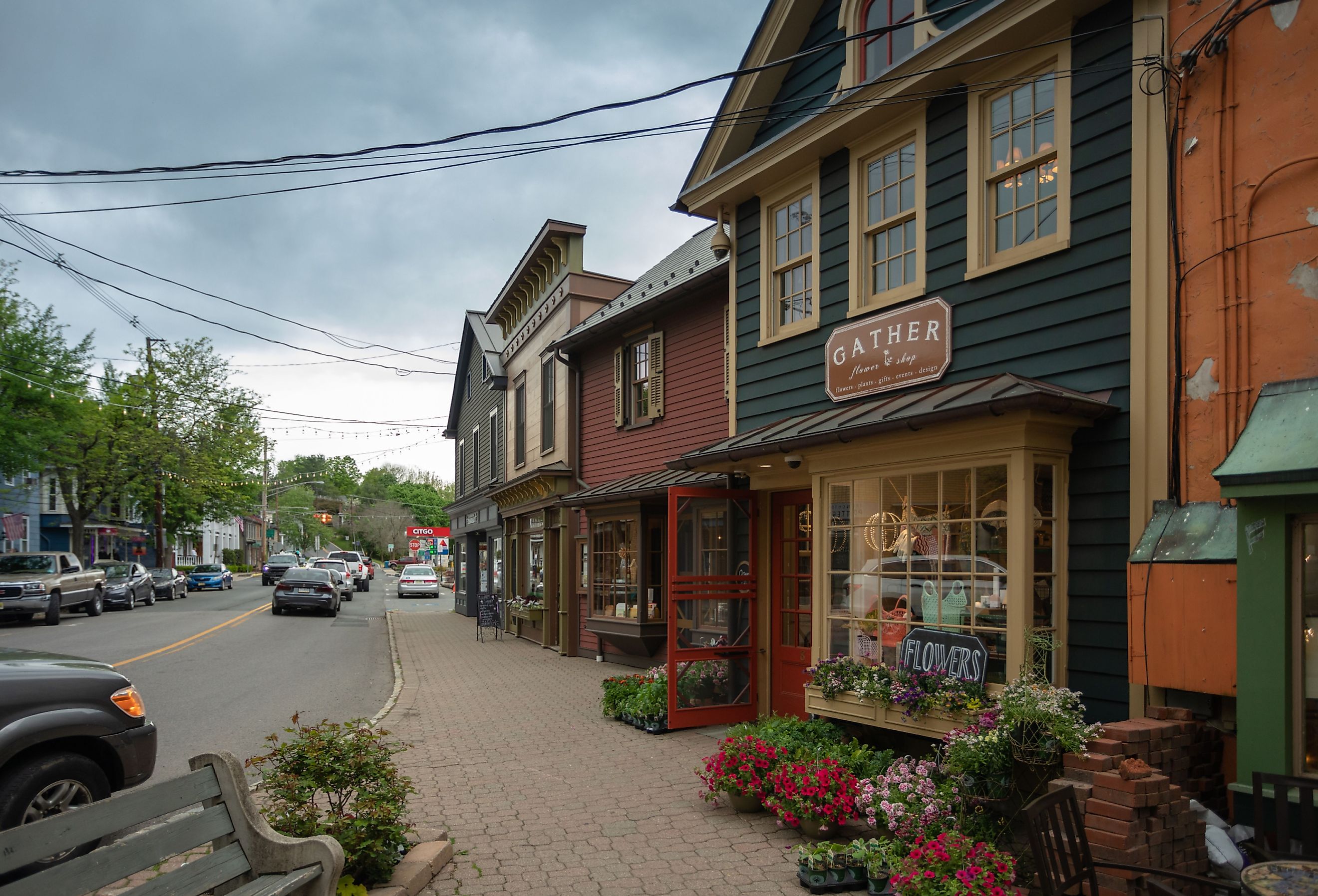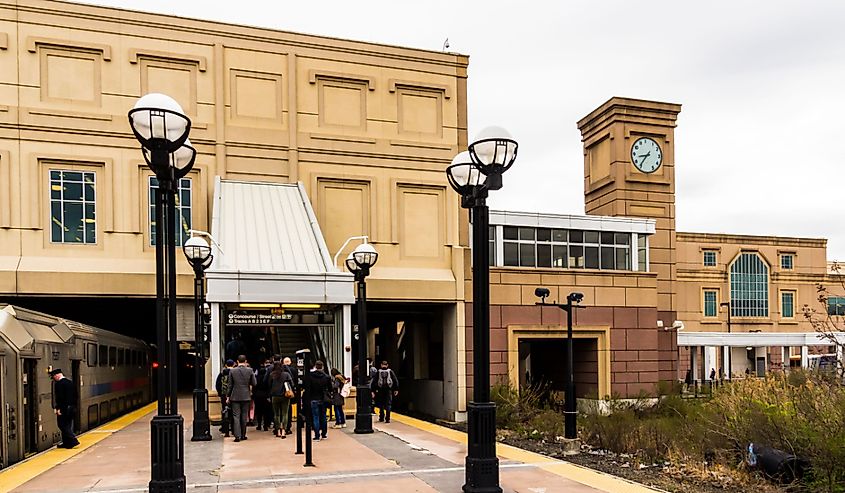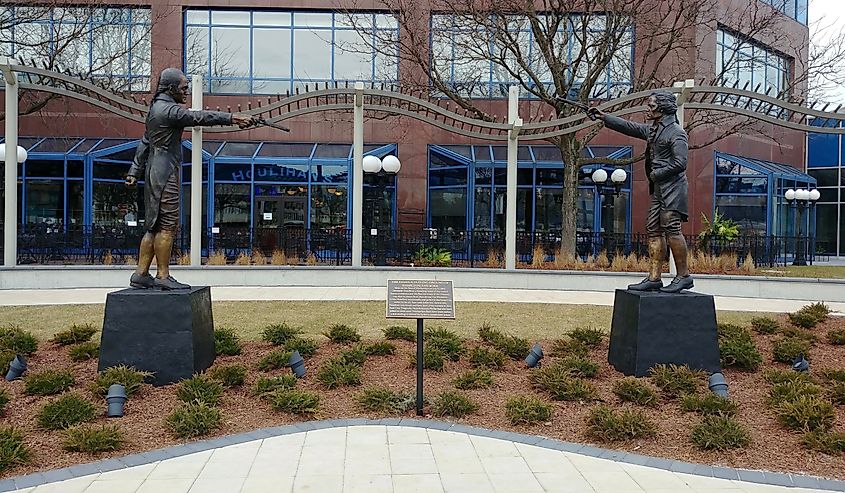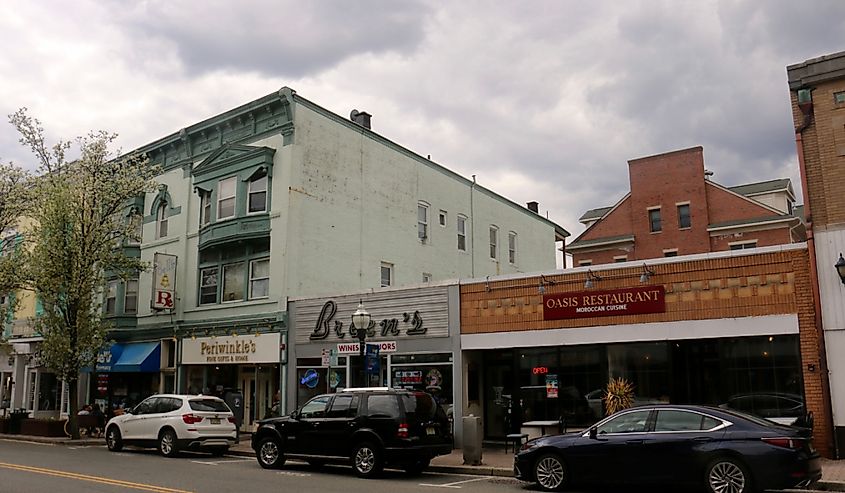
These Towns in New Jersey Have a Rich Cultural Heritage
New Jersey, a state filled with as much history as the founding of America, as the third state to ratify the US Constitution in 1787, also has plenty of small towns to match. With some being holdovers from The Thirteen Colonies, these communities still contain an old American spirit. Whether exploring the famous town of Princeton with its namesake University or the coastal town of Cape May, each town holds a rich cultural heritage. As proof of its unique and rich history, set out and discover seven must-see New Jersey towns that embody the cultural heritage of the state as a whole.
Frenchtown

Though the Lenni-Lenape tribe lived on the land for years, Frenchtown was not formally created until 1867. Before then, a hamlet existed since the rumblings of the American Revolution. Eventually, coming into the hands of a wealthy Frenchman, Frenchtown gained its identity from the vast influx of families from France.
Now known today for its many colorful events, such as the Zombie Crawl and Christmas tree lighting, Frenchtown is one of the most popular destinations in New Jersey. Visitors can now walk over the Delaware River using the lovely Uhlerstown-Frenchtown Bridge, which marks the state line between Pennsylvania and New Jersey. Once finished, stop by the historical district and take in the old-fashioned beauty of the protected 19th-century buildings kept in their original architecture. Lined with historic shops, such as The Sunbeam General Store or The Frenchtown Bookshop, it is here, upon closer inspection, that Frenchtown manages to hold onto a charm deep from its past.
Princeton

Needing no introduction, Princeton is known internationally for its Ivy League titan, Princeton University. Housing some of the Founding Fathers, the town has become somewhat of an intellectual and historical capital. Despite having roots before the American Revolution, Princeton existed as two separate municipalities before 2013.
Nevertheless, the sheer number of buildings and sites where an important figure walked or lived is staggering. Likely to fill an entire list by itself, the most noteworthy landmarks are that of the Einstein House, from which the man himself lived from 1936 to his death, and the Grover Cleveland House. While it is true that Princeton gained its reputation from the university, landmarks not found on university grounds are still plentiful. The best example of this is Princeton Battlefield State Park, where General Washington defeated the British Regulars in a shock victory.
All in all, Princeton's history is now inseparable from its university. For better or for worse, Princeton as a town offers so much more than just its institution.
Montclair

The tale of Montclair is a curious one. Coming into being out of a dispute for an extra railroad in 1868, Montclair became a popular hub for housing right next to the mountains. The vision for the town was to be a tranquil countryside where the wealthy elite from nearby NYC were to retreat.
As the decades went by and the faces changed, Montclair also became home to a rising kind of artistry. Writers, painters, and all people of arts and literature sought to be left alone and inspired by Montclair's crystal beauty. As art began coalescing in this tiny sanctuary, a world-class art destination, the Montclair Art Museum (MAM), soon emerged. Hosting a collection of more than 12,000 works, MAM has been luring the creative kind to Montclair since 1914.
Cape May

A Victorian town by the coast and a colossus in history, Cape May's story is built on rough times and indomitable spirit. Much like Montclair, many of NYC's elite flock to the area for scenic views and quietness. But unlike Montclair, Cape May represents a salty-aired haven with smooth sands, seagulls, and deep blue waters. Attracting the sea-loving since the 18th century, the story of Cape May can be said with a simple sentence: progress and destruction. Every time the municipality grew, so did the natural disasters to keep it in place. Having had enough of this, a fundamentalist minister named Carl McIntire purchased many of the surviving Victorian-era buildings and relocated them to protect them in case nature struck again. This small act of kindness carried these properties well into the 21st century.
Transforming the town into something greater, Cape May's wondrous locations and sights come straight from the past. Firstly, the famous Cape May Lighthouse, which offers guided tours of the 165-year-old structure, illuminates the minds of all who see it. Finally, no town tour is complete without seeing the 1879 Physick House Museum, a preserved "Stick style" mansion that details the life of the prominent Physick family.
Secaucus

Bolstering the title of New Jersey's shopping Mecca, Secaucus is a more modern town. Becoming an official town in 1917, this once-small farming and ranching community exploded into a renowned commuter hub. Although near one of the most famous cities in the world, Secaucus represents where green grasses and meadows meet the new urban and concrete.
The whole town looks as if time stopped in the 1950s, but it still has progressed enough to offer landmarks and locations that have drawn the gaze of tourists. Although the famous Secaucus Outlets closed in 2015, The Plaza still offers a specialty shopping experience that successfully competes with New York City's Empire Outlets. Visitors or commuters can then stand in awe while in the presence of the historic and unique Secaucus Junction rail station.
Weehawken

Meaning "maize land" in Algonquian, Weehawken distinguishes itself from its peers by obtaining townhood in 1609. Later, it acted as a strategic advantage point from which the American patriots could keep an eye on the British.
Weehawken today, however, has turned on its revolutionary roots, and has become prime real estate on the Hudson Waterfront. Still retaining those precious moments of history in its soil, Weehawken has a plethora of culturally significant sites. One is Hamilton Park, where Alexander Hamilton participated in a duel that eventually ended his life. Another point of interest is The "Horseshoe" site and its many artistic hairpins. Marking a historic residential area, the site is known as Shippen Street, providing a scenic view and a refreshing take on urban creation.
Cranford

A sleepy town named and influenced after a child's misspelling in 1849, Cranford may not be as populated or modern compared to the others in New Jersey, but what it has is spirit. This tiny stretch of land houses many historical sites, buildings, and properties to its name. The most famous of which once played a pivotal role in the American Revolution, including, but not limited to, The Revolutionary War Cantonment Site and The Revolutionary Hospital Site. Still, Cranford owns much more history than just the sites and building blocks of the nation.
Containing a wellspring of other landmarks that showcase beautiful Federalist architecture, the people of Cranford also have managed to get their own Crane-Phillips House on the National Register of Historic Places. In the style of the first American architect, the Cranford Historical Society tours the Victorian cottage to showcase life from the distant past. Cranford, a small town that, on first impression, looks quite boring, is a hidden oasis for lovers of history, archeology, and nature.
Having deeper roots than many, the strange, bright, and significant towns of New Jersey manage to chug along and defeat what threatens their legacy. A legacy is irreplaceable and indispensable to the many havens of history and culture that have planted and grown themselves on New Jersey's soil. Stretching from the coast to the hidden and forested, these towns may have no comparison anywhere else in America. May they stand as proud and rich as they are today for years to come.











